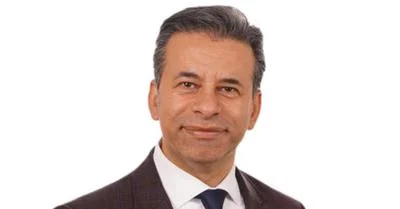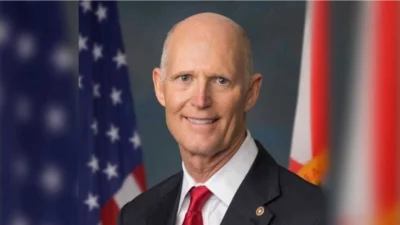The Congressional Record is a unique source of public documentation. It started in 1873, documenting nearly all the major and minor policies being discussed and debated.
“DISTRIBUTED POWER HYBRID ENERGY ACT” mentioning the U.S. Dept. of Energy was published in the Extensions of Remarks section on pages E329 on Feb. 27, 2003.
The publication is reproduced in full below:
DISTRIBUTED POWER HYBRID ENERGY ACT
______
HON. MARK UDALL
of colorado
in the house of representatives
Thursday, February 27, 2003
Mr. UDALL of Colorado. Mr. Speaker, today I am introducing the Distributed Power Hybrid Energy Act. This bill would direct the Secretary of Energy to develop and implement a strategy for research, development, demonstration, and commercial application of distributed power hybrid energy systems.
Distributed power is modular electric generation or storage located close to the point of use, well suited for the use of renewable energy technologies such as wind turbines and photovoltaics, and also of clean, efficient, fossil-fuel technologies such as gas turbines and fuel cells.
Distributed power can avoid the need for and cost of additional transmission lines and pipelines, reduce associated delivery losses, and increase energy efficiency. In addition, distributed power can provide insurance against energy disruptions and expand the available energy service choices for consumers.
By their very nature, renewable resources are distributed. Our ability to cost-effectively take advantage of our renewable, indigenous resources can be greatly advanced through systems that minimize the intermittency of these resources. Distributed power hybrid systems can help accomplish this.
``Hybridizing'' distributed power systems--combining two or more renewable sources or a renewable and a fossil source--enables us to offset the weaknesses of one technology with the strengths of another. For example, in a hybrid system, the intermittency of wind power can be offset by the reliability and affordability of power generated by a microturbine.
My bill would direct the Secretary of Energy to develop a distributed power hybrid systems strategy identifying opportunities for and barriers to such systems, technology gaps that need to be closed, and system integration tools that are necessary to plan, design, build and operate such systems.
Mr. Speaker, distributed generation represents the most significant technological change in the electric industry in decades. Knowing this, it makes sense to focus our R&D priorities on distributed power hybrid systems that can both help improve power reliability and affordability and bring more efficiency and cleaner energy resources into the mix. My bill would help us do this. I look forward to working with Members of the House to move forward with this important initiative.
For the benefit of my colleagues, I've attached a fact sheet that explains the bill in more detail.
The Distributed Power Hybrid Energy Act Fact Sheet
The Distributed Power Hybrid Energy Act would direct the Secretary of Energy to develop and implement a strategy for research, development, demonstration, and commercial application of distributed power hybrid energy systems.
Background
Distributed power is modular electric generation or storage located close to the point of use. Distributed systems include biomass-based generators, combustion turbines, concentrating solar power and photovoltaic systems, fuel cells, wind turbines, microturbines, engines/generator sets, and storage and control technologies. Distributed resources can either be grid connected or operate independently of the grid. In contrast to large, central-station power plants, distributed power systems typically range from less than a kilowatt (kW) to tens of megawatts (MW) in size.
Distributed power is well suited for the use of renewable energy technologies such as wind turbines and photovoltaics, and also of clean, efficient, fossil-fuel technologies such as gas turbines and fuel cells.
Many benefits can be realized by producing electricity and heat closer to the customer and integrating these distributed energy resources with our traditional central-station generation, transmission, and distribution infrastructure. Combined heat and power systems at industrial plants or commercial buildings can be three times more efficient than conventional central generating stations. When facilities such as hospitals and businesses with computers or other critical electronic technology can get power from either the grid or their own generating equipment, energy reliability and security are greatly improved.
Distributed power can avoid the need for and cost of additional transmission lines and pipelines, reduce associated delivery losses, and increase energy efficiency. In addition, distributed power can provide insurance against energy disruptions and expand the available energy service choices for consumers.
Since 1998, the Department of Energy's Distributed Power Program has been working to reduce barriers to the widespread adoption of distributed energy resources. One area of research that has so far not received the attention it deserves, however, is distributed power hybrid systems.
By their very nature, renewable resources are distributed. Our ability to cost-effectively take advantage of our renewable, indigenous resources can be greatly advanced through systems that minimize the intermittency of these resources. Distributed power hybrid systems can help accomplish this.
``Hybridizing'' distributed power systems--combining two or more renewable sources or a renewable and a fossil source--enables us to offset the weaknesses of one technology with the strengths of another. For example, in a hybrid system, the intermittency of wind power can be offset by the reliability and affordability of power generated by a microturbine. Distributed power hybrid systems also have the potential for fuel flexibility--for instance, using biofuels for distributed power systems such as gas turbines and fuel cells. In addition, hybrid systems can be developed to serve multiple uses, such as combined heat and power, offering the opportunity to provide reliable energy services at lower cost.
Legislation
This legislation would direct the Secretary of Energy to develop a distributed power hybrid systems strategy identifying opportunities for and barriers to such systems, technology gaps that need to be closed, and system integration tools that are necessary to plan, design, build and operate such systems. This strategy might provide for the development of system integration tools for developing such systems; tests of distributed power hybrid systems, including field tests with industry and cost-shared demonstrations of such systems to validate performance; data to characterize grid operations, including interconnection requirements; and precise resource assessment tools to map local resources for distributed power hybrid systems.
The legislation calls for the implementation of the plan over five years, along with its integration into the Department of Energy's Office of Distributed Energy Resources. The bill would also require an annual report on the use of and experience with distributed power hybrid systems, in addition to identifying the remaining R&D issues to ensure the successful application of these systems.
To carry out the bill's requirements, the bill would authorize $60 million over fiscal years 2004 through 2008.
____________________








